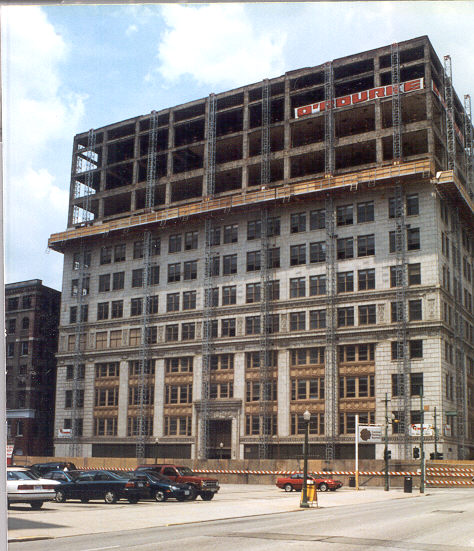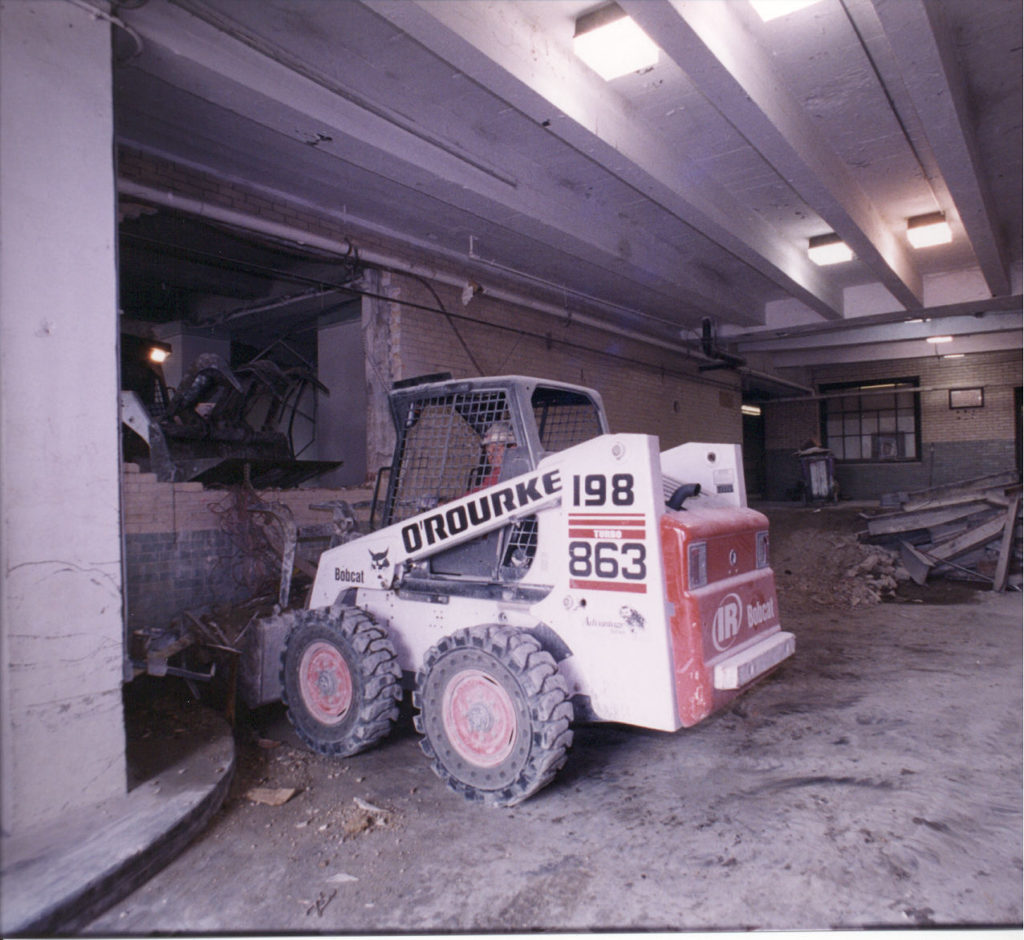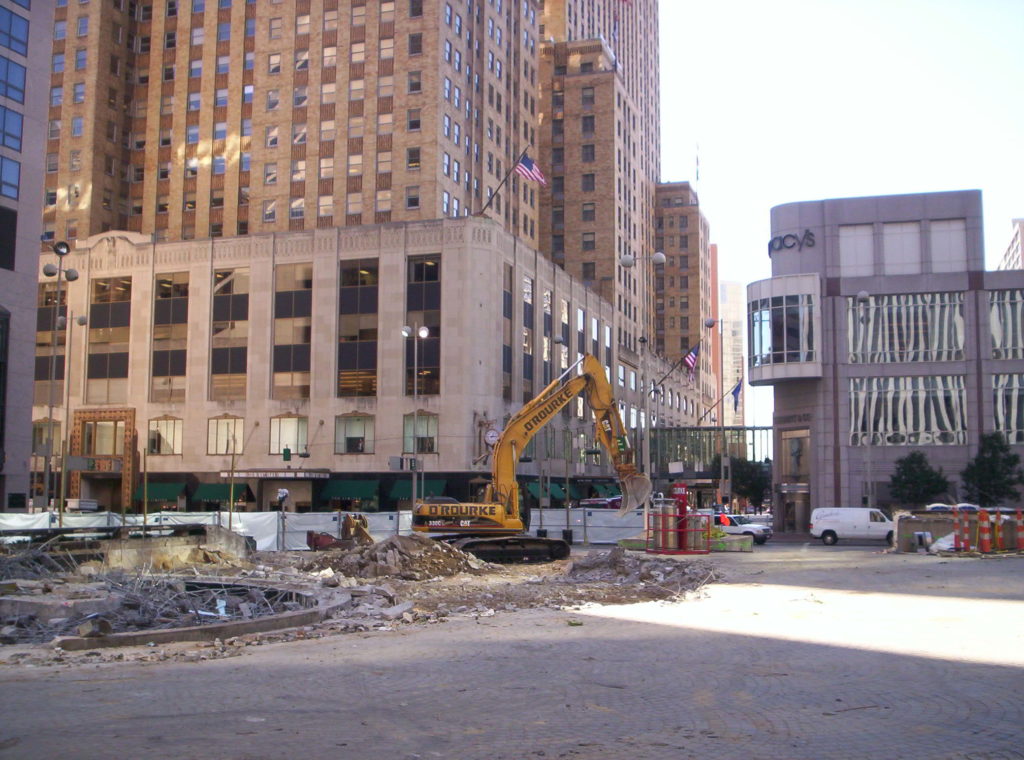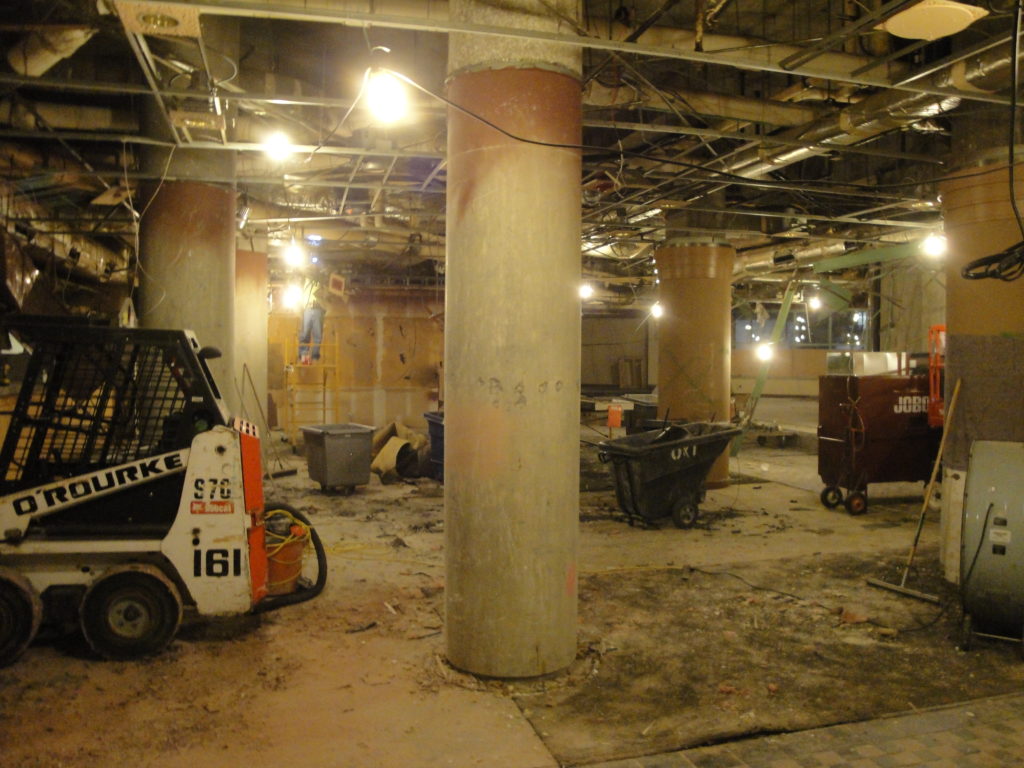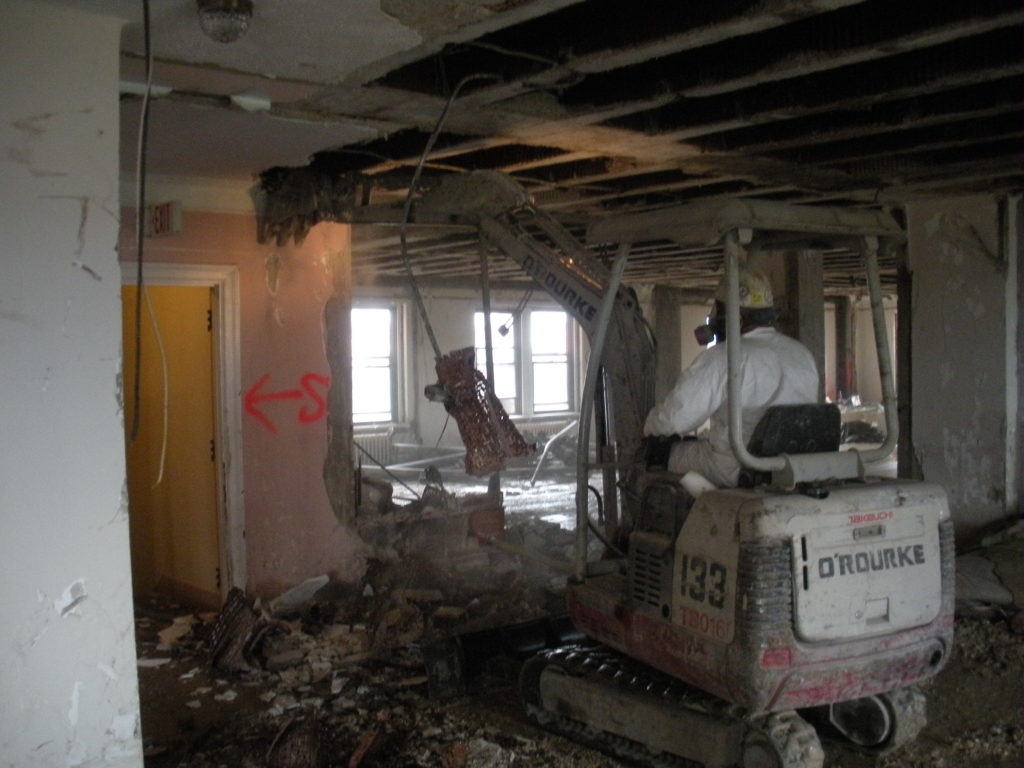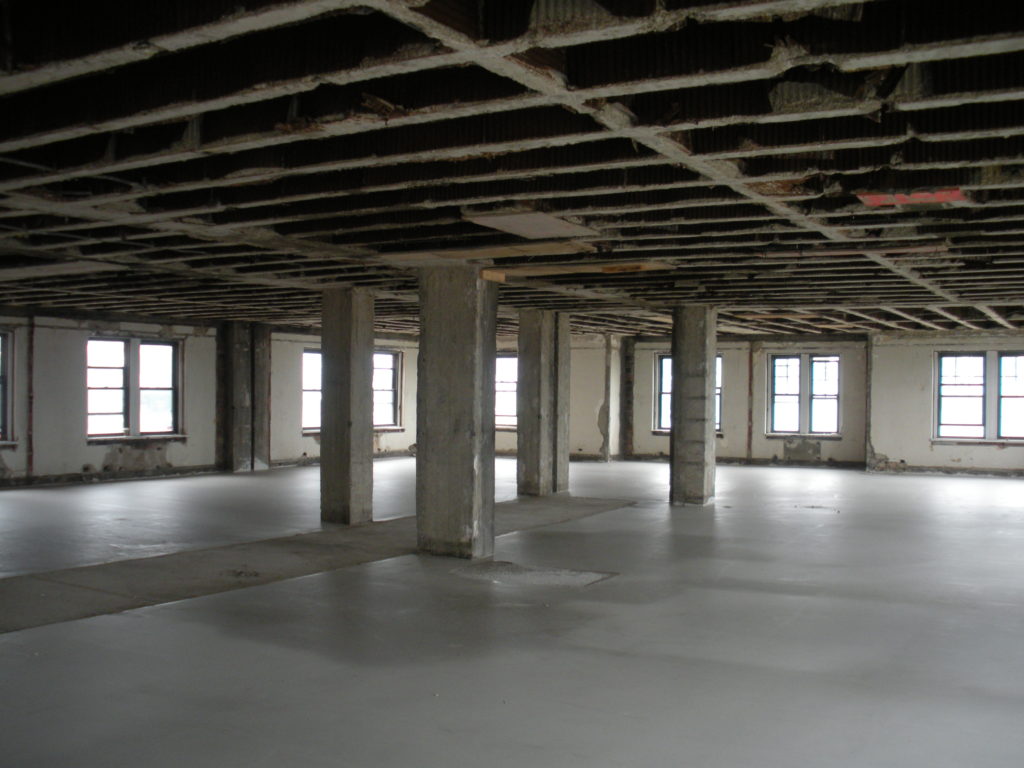What Is Demolition Salvage?
Demolition salvage is the process of recovering valuable materials from a structure before or during its demolition. Rather than sending everything to a landfill, the goal is to identify what can be reused, recycled, or resold. Materials like steel, concrete, brick, wood, and architectural elements are carefully separated for another life in construction or manufacturing.
For O’ROURKE, demolition salvage is not an afterthought; it’s a planned and integrated step in every project. Each site is evaluated for its potential to yield reusable materials before the first piece of equipment arrives. The result is a more sustainable demolition that benefits clients, communities, and the environment.
O’ROURKE’s Sustainable Demolition Approach
O’ROURKE’s demolition salvage process starts long before the wrecking ball. The team conducts a full site assessment to understand which materials can be recovered. Engineers, environmental specialists, and project managers work together to coordinate dismantling, separation, and transport strategies that align with local recycling and environmental regulations.
Every project follows a similar set of sustainable priorities:
- Reuse whenever possible: Many materials, like structural steel and brick, can be directly reused after cleaning or processing.
- Recycle efficiently: When reuse isn’t possible, O’ROURKE works with certified recyclers to ensure materials are converted responsibly.
- Reduce landfill waste: We consistently diverts large percentages of demolition debris from disposal facilities.
- Report transparently: Clients receive documentation showing what materials were recovered, where they went, and how much waste was avoided.
This systematic approach has helped O’ROURKE become a trusted partner for developers and municipalities pursuing environmentally responsible demolition projects.
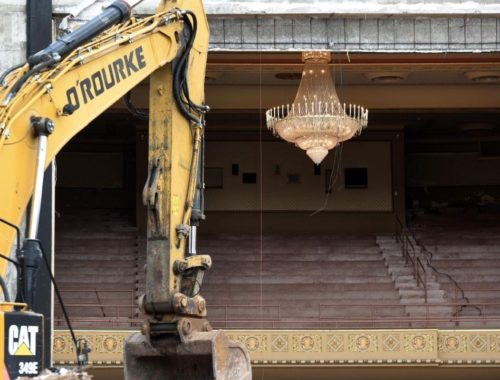
Sorting, Recycling, and Repurposing
Recovered materials are transported to approved recycling or processing facilities. O’ROURKE maintains strong partnerships with regional recyclers and suppliers to ensure materials are reused effectively. Concrete is often repurposed as backfill or aggregate. Metals are melted and returned to manufacturing supply chains. Even non-structural items like fixtures and doors can find new life through resale or donation.
Throughout the process, detailed documentation tracks every load removed from the site. This data supports environmental reporting, waste diversion metrics, and sustainability certifications.
Salvaged Materials
Demolition sites contain more reusable materials than most people expect. O’ROURKE’s teams are trained to identify and recover these valuable resources efficiently and safely.
- Structural Steel: Salvaged steel is cleaned, sorted, and shipped to mills for reprocessing or reused in structural applications.
- Concrete and Masonry: Concrete is crushed and repurposed as aggregate for new roads, foundations, and site fill.
- Brick and Stone: Older buildings often contain durable bricks and cut stone that can be cleaned and reused in restoration work.
- Wood and Lumber: Heavy timbers and framing lumber are reclaimed for new construction or repurposed into furniture and flooring.
- Architectural Elements: Fixtures, doors, windows, and ornamental metals are preserved and reused in adaptive reuse or historical projects.
By recovering these materials, O’ROURKE reduces both environmental impact and disposal costs—while giving new life to quality building components.
Our Demolition Salvage Process
O’ROURKE’s demolition salvage process is structured for precision, efficiency, and accountability. Every step is documented to ensure materials are handled responsibly and safely.
1. Site Assessment
Before demolition begins, the project team surveys the structure to identify materials suitable for recovery. This step includes reviewing blueprints, inspecting key structural areas, and cataloging components with salvage potential.
2. Selective Demolition
Crews carefully dismantle sections of the structure, removing items that can be reused or recycled. This controlled approach preserves the integrity of materials and ensures safety throughout the process.
3. Sorting and Recovery
Once materials are separated, they are sorted into categories like metals, concrete, wood, and mixed debris. Specialized equipment, including mobile crushers, magnets, and material handlers, helps streamline this stage.
4. Transport and Recycling
Recovered materials are transported to approved recycling or reuse facilities. O’ROURKE coordinates logistics to minimize transportation distance and emissions, often using regional partners to close the loop locally.
5. Documentation and Reporting
After the salvage process is complete, O’ROURKE provides clients with detailed reports showing the quantities and types of materials recovered. This data is used for project certifications, environmental reports, and internal sustainability metrics.
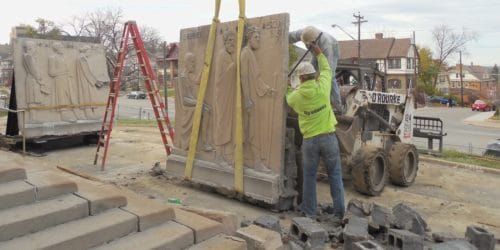
Sustainability and reporting
Many owners track diversion, reuse, and donation outcomes. Our reporting supports those needs.
- Diversion tracking by category and weight
- Receipts and manifests from recycling facilities and scrap buyers
- Donation acknowledgments for qualifying items
- Photo documentation before removal, during removal, and at staging
- Narrative summary that connects salvage steps to project goals
For projects pursuing LEED v4/4.1 Materials and Resources credits, we align data with credit language. We list end markets, facilities, and percentages. Your team can place this data into the project’s documentation platform.
Why Sustainable Demolition Matters
The construction and demolition industry produces millions of tons of waste each year, much of it still usable. Demolition salvage changes that equation. It transforms what would have been waste into raw material for new projects.
As more organizations focus on sustainability, the demand for responsible demolition continues to rise. Property owners are looking for contractors who can deliver both efficient demolition and meaningful environmental impact. From high-rise dismantling to heavy industrial sites, O’ROURKE has proven that demolition can be both efficient and environmentally sound. Salvage plays a key role in achieving that balance.

Why Owners Choose O’ROURKE
We engage during preconstruction. Our team inventories likely salvage items, ranks value by market demand, and sequences removal so crews do not conflict. Your superintendent gets a schedule that fits the critical path.
We prepare site specific safety plans, perform daily Job Hazard Analyses, and follow OSHA rules for lockout and tagout. Rigging plans cover picks, travel paths, and staging. Crews use rated gear from recognized brands (Crosby rigging hardware, CM hoists) and follow manufacturer guidance.
We maintain relationships with scrap buyers, equipment resellers, auction platforms, and donation partners. Items move through the right channel based on condition and timing. Metals sell by weight. Switchgear and mechanical units move through brokers or auctions. Architectural items may go to reuse centers or directly to designers and contractors.
You receive weights by category, receipts and manifests, photos, and a summary of resale proceeds or donation acknowledgments. We align our reporting with LEED v4/4.1 Materials and Resources credits when relevant. We also provide diversion summaries you can use for ESG reports.
O’ROURKE manages on-site sorting, packaging, labeling, temporary storage, loading, and transport. We handle refrigerant recovery through Section 608 certified technicians when chillers or RTUs are removed. Universal wastes such as lamps and ballasts follow EPA guidelines with proper containers and manifests.
Benefits of Demolition Salvage
Choosing demolition salvage provides benefits that extend beyond environmental responsibility. O’ROURKE helps clients turn sustainability into measurable project value.
Environmental Impact
Diverting waste from landfills significantly reduces a project’s carbon footprint. Recycling metals and reusing masonry prevents new resource extraction and lowers emissions linked to manufacturing. Salvage also keeps hazardous materials contained and properly handled through regulated recycling streams.
Cost Efficiency
Salvage can lower overall project expenses by reducing hauling and landfill fees. Some recovered materials carry resale value, which can offset demolition costs. Over time, this approach makes large-scale demolition more economically sustainable for owners and contractors alike.
Community Value
Reclaimed materials often stay within the region, supporting local construction, art, and restoration projects. O’ROURKE’s partnerships with local reuse centers and architectural salvage companies ensure valuable materials benefit nearby communities.
Compliance and Recognition
Many government and private development projects now require waste diversion targets or green certifications. Demolition salvage supports compliance with LEED and similar programs by providing quantifiable data on materials recovered and recycled.
Ready For A Salvage Assessment?
Share your project address, structure type, approximate square footage, and target start date. If you have drawings, equipment schedules, or photos, include them. We will respond with a short plan that lists priorities, rough value ranges, staging needs, and next steps. If you need a firm number for bidding, we can deliver a detailed scope with unit rates and assumptions.

